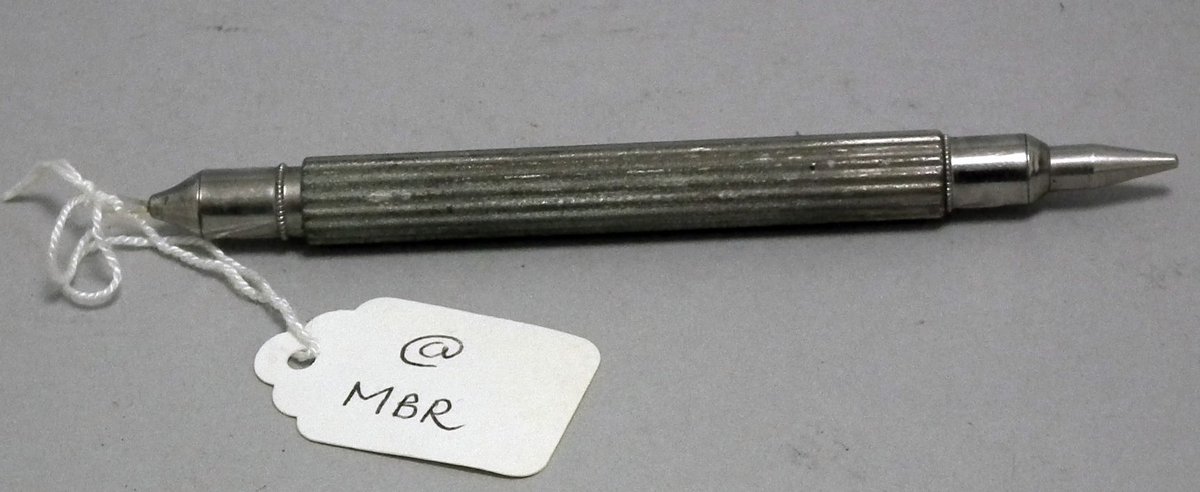
Surgeons' Hall Museums
@surgeonshall
Home to the largest & most historic collection of surgical pathology in the world. Open 10am-5pm, 7 days a week. For Library and Archive follow @RCSEDArchive.
Operators have used forceps for grasping teeth and extracting them since the 4th century BCE. Over time, the design has changed to stop too much pressure from being applied to the tooth. The shape of the blades has also improved to allow a firmer grip on the tooth.

This is a dental key! This modified design was devised by Birmingham dentist, William Robertson, & illustrated in his book 'A Practical Treatise on the Diseases of the Teeth' (1835). He was convinced that the use of this key ensured a higher degree of precision. #TriviaTuesday
It's #TriviaTuesday time again! This week we have this instrument from the early 19th century. It is 17 cm in height. Do you know what it is?
This week we are looking for a name for our #WordOnWednesday. Can you solve the clues?

It's #TriviaTuesday time again! This week we have this instrument from the early 19th century. It is 17 cm in height. Do you know what it is?

This canvas St John’s Ambulance First Aid Kit is believed to come from the 1940s. The kit inside is full and contains a variety of first aid items including bandages, dressings, antiseptic, needles and suturing material.


Our Collections Coordinator, Danielle Dray, explores the remarkable life of Professor Dorothy Ann Geddes, who made history as the first woman to hold a professorship in dentistry in the United Kingdom. surgeonshallmuseums.wordpress.com/2025/07/18/pro…

This collection of foreign bodies removed from the oesophagus was donated to the museum in 1928.

The answer to #WordOnWednesday this week is rhinoplasty!
Our #WordOnWednesday comes from our History of Surgery Museum. Can you unscramble the anagram?
Our #WordOnWednesday comes from our History of Surgery Museum. Can you unscramble the anagram?

This is a magnetic probe used to remove metal from the eye. One side is magnetic, the other side has a small loop used to gently remove non-magnetic material. #TriviaTuesday
Our mystery object for #TriviaTuesday this week is from the 20th century. It is 12.5 cm in length and 1.5 cm in diameter. Any guesses what it's for?
Our mystery object for #TriviaTuesday this week is from the 20th century. It is 12.5 cm in length and 1.5 cm in diameter. Any guesses what it's for?

Copper token by Basil Burchell advertising one of his remedies- sugar plumbs for worms. The ‘sugar-plumbs’ were made with the active ingredient being lead acetate, which probably caused more harm to the children than the worms!

Yesterday, we welcomed @youcanbeadoctor to @RCSEd Skills lab for a day of surgical work experience full of scrubbing, suturing, wound management and laparoscopic training.




The answer to #WordOnWednesday this week is tuberculosis!
Our #WordOnWednesday this week comes from our Wohl Pathology Museum. Can you unscramble the anagram?
Our #WordOnWednesday this week comes from our Wohl Pathology Museum. Can you unscramble the anagram?

This is a lip retractor used to keep the lips away from the teeth during dental treatment.
Our #TriviaTuesday object this week comes from the 19th century. It is 14.5 cm in length and 4 cm in width. Any guesses what it is for?
Our #TriviaTuesday object this week comes from the 19th century. It is 14.5 cm in length and 4 cm in width. Any guesses what it is for?

This plaster cast was taken around 1921. It is of the hand of a 73 year old man born with Brachydactyly, the medical term for short digits. If you look closely, you can also see the fingers are webbed.
